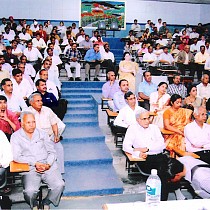DEVELOPMENT OF IPRM STRATEGY IN BT COTTON AND ITS IMPACT ON PRODUCTION AND ECONOMICS
Punjab Agricultural University, Regional Research Station, Abohar – 152 116 * Department of Entomology, PAU, Ludhiana – 141 004
P.K. ARORA, KAMALDEEP SINGH AND A.K. DHAWAN
In order to manage the problems arising due to the excessive use pesticides for the control of sucking insect pests in Bt cotton, a strategy based on four window programme has been developed for disseminating among the cotton growers of Punjab. These four windows of insect pest resistance management (IPRM) strategies included cultivation of varieties/ hybrids tolerant to sucking pests, sowing of refugia around the main field, no spray from sowing to first week of July, use of endosulfan/imidacloprid from second week of July to 1st week of August, use of OPs/Carbamates/SPs during the mid to end of August, use of OPs/new chemicals during September to October. Three districts i.e. Mansa, Ferozpur and Bathinda were covered. Non–IPRM villages were also selected for calculating the impact of adopted strategies. It was observed that with the adoption of IPRM strategies, there was less incidence of sucking pests, higher number of natural enemies reduced cost of production and the net income increased. The farmers obtained an additional profit of Rs. 4724and Rs. 4267 per hectare during 2005–06 and 2006–07, respectively, due to the adoption of IPRM strategies in Bt cotton production in Punjab.


